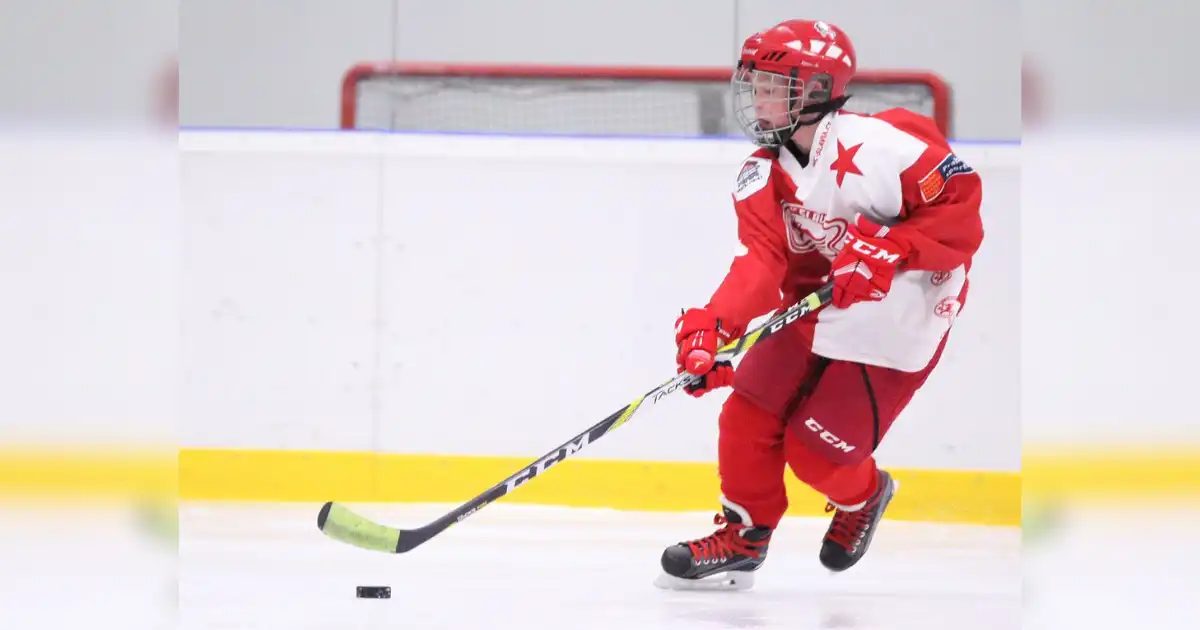Dekeing and puck handling are two of the most exciting and essential skills in hockey. Mastering these techniques can turn a good player into a game-changing one, especially when navigating tight spaces or challenging defenders one-on-one. Whether you’re a forward looking to outmaneuver a defenseman or a defenseman trying to keep the puck under pressure, improving your deking and puck-handling skills will elevate your game. Here’s a comprehensive guide on how to train effectively.
The Foundations of Great Dekeing and Puck Control
Before jumping into advanced drills, it’s crucial to build a strong foundation:
• Proper Grip and Posture: Keep your top hand loose to allow full range of motion and your bottom hand firm to maintain control. Bend your knees slightly, keep your chest up, and stay light on your skates.
• Eyes Up: Train yourself to keep your eyes on the play rather than staring at the puck. Peripheral vision is your best friend.
• Soft Hands: The softer your touch, the easier it is to maneuver the puck with precision and subtlety.
Core Drills for Puck Control in Tight Spaces
Figure-8 Stickhandling
This drill develops precision and puck control in close quarters.
1. Set up two cones about one stick length apart.
2. Stickhandle the puck in a figure-8 pattern around the cones.
3. Focus on using your forehand, backhand, and toe drag while keeping the puck close to your blade.
Tips: Start slow to emphasize control and gradually increase speed. Keep your head up as much as possible.
Triangle Fake-Outs
This drill sharpens your ability to fake out defenders.
1. Use three objects (cones, water bottles, or pucks) to form a triangle.
2. Stickhandle around one object, then make a quick fake toward the second object, pulling the puck to the opposite side.
3. Finish with a toe drag or quick shot if you’re practicing near the net.
Tips: Emphasize explosive movements and make the fake as convincing as possible.
Obstacle Weave
This drill mimics navigating through multiple defenders.
1. Set up 5-7 cones in a zigzag pattern about 2-3 feet apart.
2. Weave the puck through the cones using tight turns, quick fakes, and creative dekes.
Tips: Use your body to shield the puck, and keep your stick blade angled for optimal control.
Advanced Techniques to Elevate Your Game
Toe Drags
Toe drags are one of the most effective moves for tight spaces.
• Drill: Place a cone or puck as a defender. Stickhandle toward it, then drag the puck back with the toe of your blade and pull it around the obstacle.
• Key Focus: Stay balanced and shift your weight for a convincing fake.
The “Fake Shot” Deke
Faking a shot before pulling the puck around a defender or goalie can be a game-changer.
• Drill: While skating toward the net, wind up as if you’re going to shoot. At the last second, pull the puck to your backhand or toe drag it around an obstacle.
One-Handed Control
Mastering one-handed control can keep the puck out of a defender’s reach.
• Drill: Practice skating around cones while keeping the puck on your forehand or backhand with one hand on your stick.
Simulated Game Scenarios
Practicing in isolation is great, but adding game-like pressure takes your training to the next level.
1-on-1 Battles
Pair up with a teammate to simulate defending and attacking situations. Try different dekes and puck-handling moves to beat your opponent.
Tight Space Scrimmages
Play small-area games, like 3-on-3 in the corners, to develop quick decision-making and precise puck handling under pressure.
“React and Deke” Drill
Have a partner randomly point left or right as you approach them. React to their direction by executing a deke to the opposite side.
Tips for Success
• Focus on Speed and Control: Being fast is useless if you lose the puck. Aim to combine both elements.
• Experiment with Creativity: Every player has their unique flair—try out different moves and see what works for your style.
• Strengthen Your Core and Legs: A strong core and stable legs allow you to maintain balance and control during intense plays. Incorporate off-ice training like planks, lunges, and squats.
• Consistency is Key: Practice regularly, even for just 10-15 minutes a day, to build muscle memory.
Final Thoughts
Great deking and puck handling are not just about flashy moves—they’re about control, creativity, and confidence. By practicing the drills outlined here and consistently challenging yourself in game-like scenarios, you’ll develop the skills to dominate in tight spaces and leave defenders in your wake. Remember, every master deker started with the basics—so stay patient, stay persistent, and always keep your stick on the ice.
Now, grab your stick, hit the ice, and let your hands do the talking! 🏒💪
#HockeySkills #PuckControl #TrainLikeAPro

